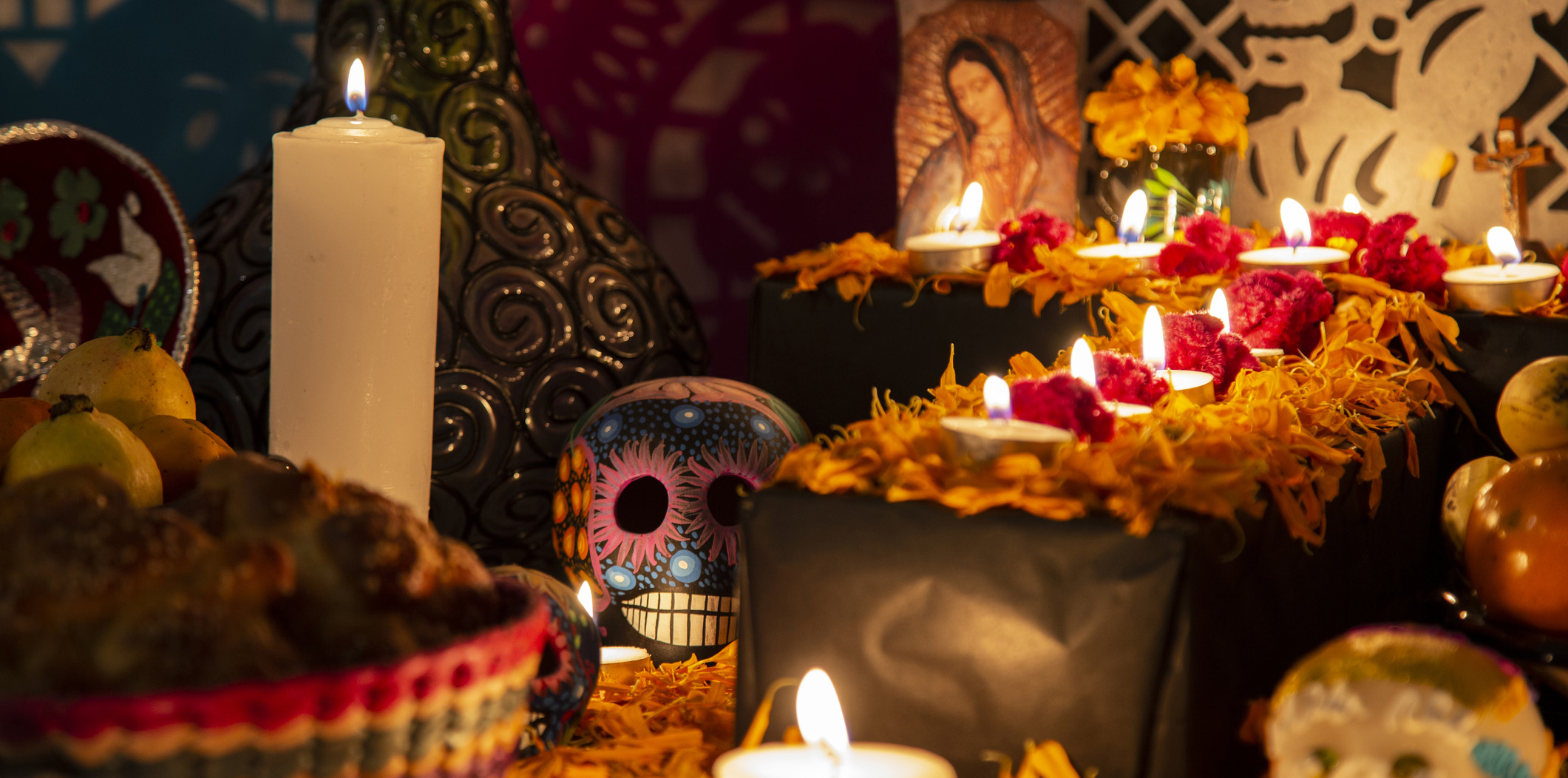
The Meaning Behind This Colorful Celebration
Día de los Muertos is a celebration of life and joy in which every year on Nov. 2, families gather to honor the lives of those who have departed. The Mexican tradition will be celebrated again this year at the University of Northern Colorado with activities on and off campus. The Chicana/o and Latinx Studies program is hosting their annual Día de los Muertos Celebration on Nov. 1, that features student presentations on altars. The altars will be on display Oct. 31 through Nov. 4 in Campus Commons. UNC’s College of Performing and Visual Arts is also hosting a performance this year titled In Remembrance, a concert of choral music honoring and celebrating those who have departed.
One of the songs will feature vocal soloist Reese Cruz, a student in UNC’s Vocal Performance program. Cruz will be singing a Mexican traditional song arrangement of La Llorona, a story about a weeping woman.
“This is a celebration to honor our beloved ones and it has to be understood with respect,” Cruz said. “I grew up in a family with deep Mexican roots. I remember how every year, on these days, we used to set up our altar with food, candles, candy skulls and pictures of my relatives. For me, this was always a sacred moment, and I am immensely proud to be able to share my traditions now through my singing. I hope you all can come to the concert."
Samuel Dong Saul, assistant professor of Graphic Design, Studio and Foundations Coordinator, who is presenting a collection of 30 digital art pieces at the Tointon Gallery in Greeley on Nov. 1, mentioned how Día de los Muertos is a way for him to honor his own mother.
“It’s very important for me to celebrate Día de los Muertos through my digital illustrations, because it is my way to honor the memory of my mom.” Dong Saul said.
Although originally a Mexican tradition, Día de los Muertos is gaining interest among the American population every year. However, it is important to consider the deep meaning behind the painted faces and the candy skulls.
As someone who has worked for several years promoting the Mexican culture and particularly the Day of the Dead through the Penn Museum of Archaeology and Anthropology, UNC’s new Bilingual Communication Strategist, Carlos José Pérez Sámano answers some of the most common questions about this celebration.
UNC is celebrating this tradition with several activities that you can find listed below:
On Campus:
- UNC’s Día de los Muertos. Organized every year by the Department of Chicana/o and Latinx Studies will include student presentations on altars, legend storytelling, literary calaveritas contest, La Catrina más Catrina contest, food, live music, etc. on Tuesday, Nov. 1, 5-8 p.m. More information.
- Concert and Altar: In Remembrance: UNC Concert Choir, Chamber Choir, Glee, and University Singers present a concert of oral music on Tuesday, Nov. 1, 7:30-9 p.m. More information.
Local Events:
- Greeley Creative District: Community Día De Los Muertos Celebration and Art Exhibit at Tointon Gallery on Wednesday, Nov. 2, 7-9 p.m. More information.
More Stories
-
UNC Selects New Vice President of Student Affairs
Este artículo no está en español.
-
Employees Celebrated at Annual Staff Recognition Event
Este artículo no está en español.
-
State Funding, Finances and Strategic Planning Lead Agenda in February Board of Trustees Meeting
Este artículo no está en español.
-
UNC Achieves Carnegie’s Prestigious R2 Research Activity Designation
Este artículo no está en español.





